TONGUE MAPPING 101
With Eastern Medicine
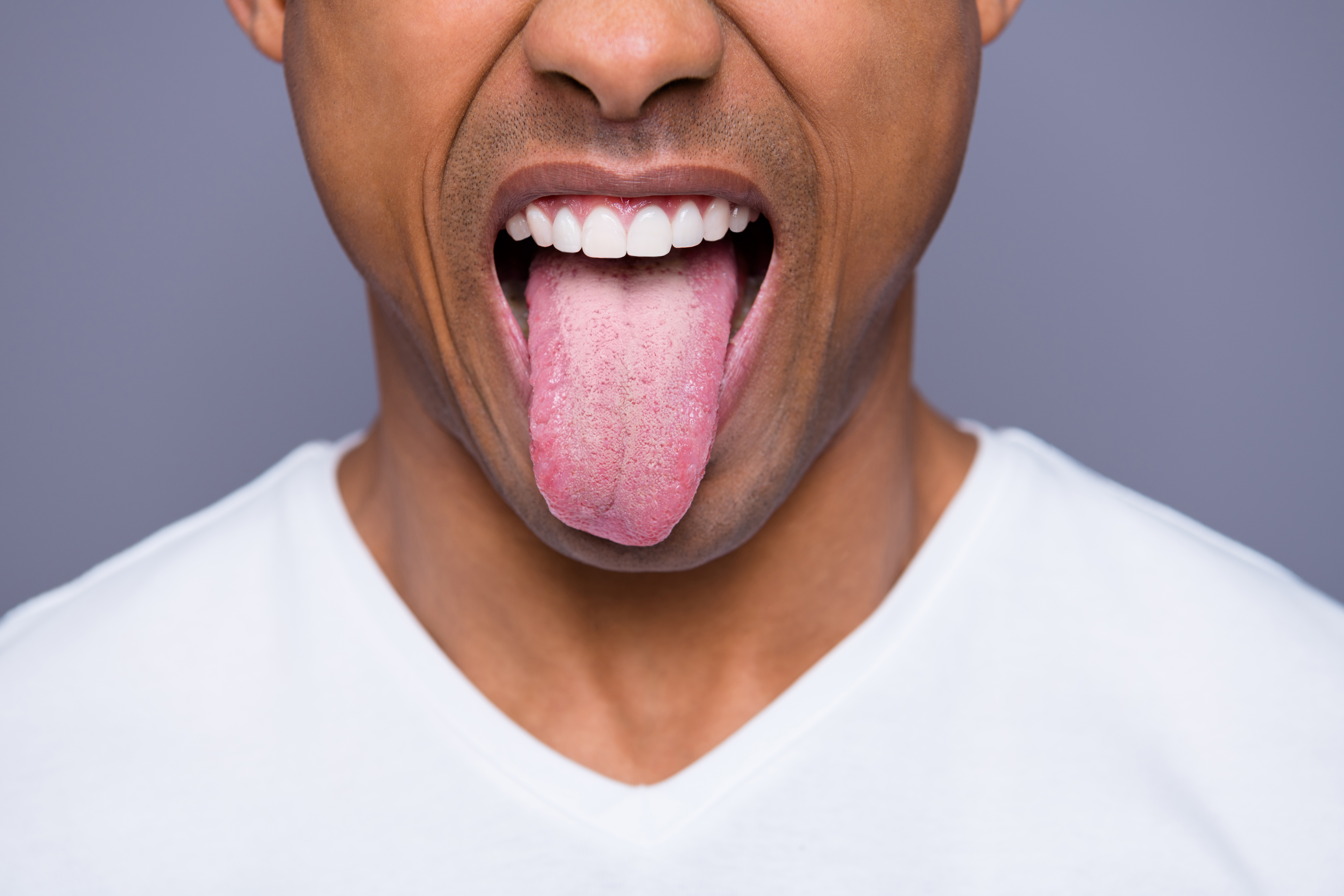
Remember when Jason Mraz told the whole world he spent “way too long” checking his tongue in the mirror? He may have been onto something regarding his overall health and wellness.
During a routine doctor’s visit, the nurse almost always takes a look inside the mouth to see if a problem may be occurring there. However, in Eastern medicine, a certain part of the mouth can speak volumes about a patient’s health. The tongue can be used as an accurate diagnostic tool to tell you about your health and identify treatments that will best suit your body’s needs. Tongue mapping, or lingua plana, refers to the way the tongue changes shape based on its position in the mouth and according to the five elements of traditional Chinese medicine: wood, fire, earth, metal, and water.
 When your tongue coating, color and markings are somewhat mapped over specific areas, it allows you or an acupuncturist to build a picture of your internal health; i.e. the tongue shows the balance of the Qi, blood and fluid in different energy systems which can affect your health. This is because the tongue is like a road map for your health—a mirror of what’s taking place in the body. It offers observable, objective information about the state of blood circulation, hydration, digestion, energy levels, and so much more. Learning how to properly tongue map can help you better understand your own body’s needs so you can better treat it with the most effective therapies and remedies. Here’s what you need to know about tongue mapping according to Eastern medicine.
When your tongue coating, color and markings are somewhat mapped over specific areas, it allows you or an acupuncturist to build a picture of your internal health; i.e. the tongue shows the balance of the Qi, blood and fluid in different energy systems which can affect your health. This is because the tongue is like a road map for your health—a mirror of what’s taking place in the body. It offers observable, objective information about the state of blood circulation, hydration, digestion, energy levels, and so much more. Learning how to properly tongue map can help you better understand your own body’s needs so you can better treat it with the most effective therapies and remedies. Here’s what you need to know about tongue mapping according to Eastern medicine.
The Areas of the Tongue
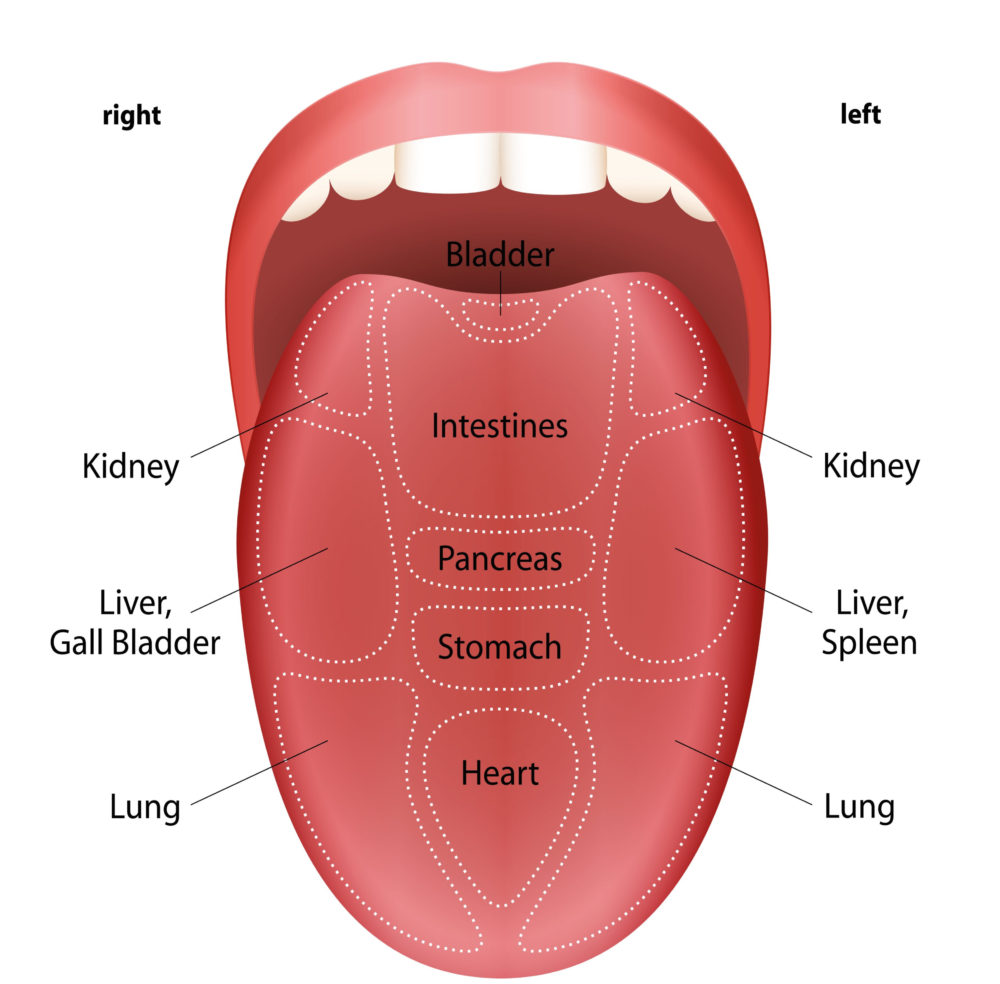 By understanding eastern medicine tongue mapping, you’ll be able to identify where on your tongue something tastes best. According to traditional Chinese medicine, every taste bud on your tongue corresponds with an organ in your body. The tongue can be sectioned into 5 parts: four along the center of the tongue and the two sides. The tip of your tongue has been connected to bitter organs such as the heart and lungs. The middle area is associated with the spleen and stomach. The sides have been linked with sweet organs such as the gallbladder and liver, while the back of your tongue is connected with sour organs such as the bladder and kidneys.
By understanding eastern medicine tongue mapping, you’ll be able to identify where on your tongue something tastes best. According to traditional Chinese medicine, every taste bud on your tongue corresponds with an organ in your body. The tongue can be sectioned into 5 parts: four along the center of the tongue and the two sides. The tip of your tongue has been connected to bitter organs such as the heart and lungs. The middle area is associated with the spleen and stomach. The sides have been linked with sweet organs such as the gallbladder and liver, while the back of your tongue is connected with sour organs such as the bladder and kidneys.
By taking a glance at the different areas, TCM practitioners are able to accurately see where a health issue may be occurring within the body. While health status can be determined by area, the state of the tongue can also allude to some inner issues.
Do I have a healthy tongue?
If you take a look in the mirror and see a moist, reddish pink, thin on the sides, thick in the middle tongue then it is safe to assume you’ve got a healthy one! In this case, take a look at these tips to keep your tongue (and body) as healthy as you can.
Things to consider when doing a tongue check include:
- SHAPE
- COLOR
- TEXTURE
- BODY FEATURES
- COATING or “FUR”
- FUR FEATURES
Cracking and Dryness
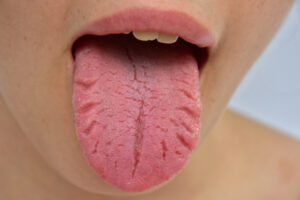 In western medicine, the term “geographic tongue“ has been used to describe a cracked tongue and is usually associated with negative health issues. Typically, if your tongue begins to look like the San Andreas Fault opened up, then that means there could be a digestive or heart issue that needs attention. Another health risk associated with cracks in the tongue is dehydration. In the elderly, energy and blood deficiencies are more common, so the tongue may present with dryness and cracks. The human body relies on water so it is important to drink enough for a moist and healthy tongue!
In western medicine, the term “geographic tongue“ has been used to describe a cracked tongue and is usually associated with negative health issues. Typically, if your tongue begins to look like the San Andreas Fault opened up, then that means there could be a digestive or heart issue that needs attention. Another health risk associated with cracks in the tongue is dehydration. In the elderly, energy and blood deficiencies are more common, so the tongue may present with dryness and cracks. The human body relies on water so it is important to drink enough for a moist and healthy tongue!
Color and Shape of the Tongue
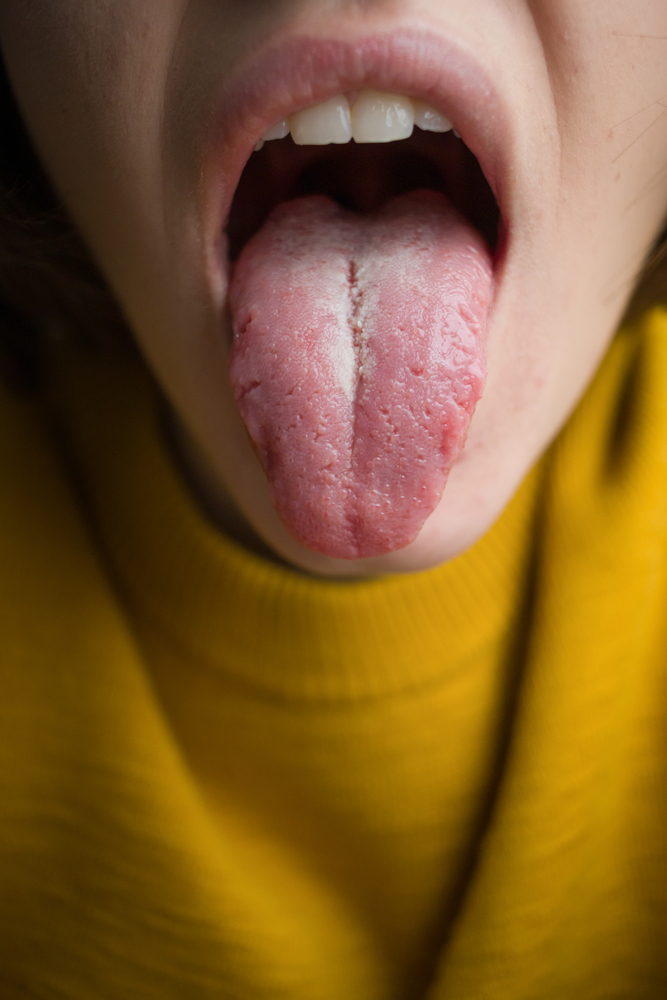 Everything in Eastern medicine revolves around Qi, the vital energy that flows all throughout your body. When your body undergoes an illness or bad energy, the tongue will reflect that. Some diseases or illnesses leave a permanent effect on the tongue. If a tongue is a darker red or crimson color it can indicate internal injury, for example. Overweight people may have more damp and/or phlegm, and, therefore, their tongues may be larger and lighter in color. Thinner people tend to have redder tongues. If you notice any dark spots or discoloration on your tongue, it could be a sign that something is off with one of those organs. If you have no color variation at all on either side of your tongue, however, it could mean that you’re lacking some important nutrients (like iron). A pale tongue indicates a Qi deficiency.
Everything in Eastern medicine revolves around Qi, the vital energy that flows all throughout your body. When your body undergoes an illness or bad energy, the tongue will reflect that. Some diseases or illnesses leave a permanent effect on the tongue. If a tongue is a darker red or crimson color it can indicate internal injury, for example. Overweight people may have more damp and/or phlegm, and, therefore, their tongues may be larger and lighter in color. Thinner people tend to have redder tongues. If you notice any dark spots or discoloration on your tongue, it could be a sign that something is off with one of those organs. If you have no color variation at all on either side of your tongue, however, it could mean that you’re lacking some important nutrients (like iron). A pale tongue indicates a Qi deficiency.
A red tongue in TCM often points towards excessive heat in the body or a Yin deficiency. Swollen, red tongue with a yellow-greasy coating translates to damp heat, often seen in those who experience chronic inflammatory conditions, skin problems, irritable and sticky stool. Yin deficiency is characterized by red to crimson tongue, usually thin, little to no coating and cracks, typical in someone who struggles with irritability, night sweats, insomnia, hot flashes due to menopause, joint or muscle stiffness and constipation.
The shape of the tongue is important as it should be plump but not too plump. If the tongue is too puffy this could indicate a Yang deficiency. According to TCM, a pale tongue also indicates a blood, Qi or Yang deficiency. In addition to the change in color on your tongue, symptoms can manifest in the form of breathlessness, fatigue, and cold limbs. Ridges on the side, or teeth marks, could also indicate problems such as exhaustion or a Qi deficiency.
Fur or Coating
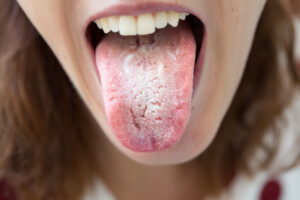 Using the term “for” when referring to the tongue may seem off putting, however, this can help TCM practitioners with their tongue diagnosis by looking at the color or placement of such fur. Fur is also referred to as a coating on the tongue. For example, after you eat dyed food, the coating will turn whatever color the dye was. A normal, healthy tongue will have a rooted light white coat (this won’t scrape off). A tongue with a thick white coat could indicate a Yang deficiency. If the coating is yellowish, you could be suffering from damp heat. The fur should not be taken into account alone, rather in combination with the shape and area of the tongue it is centered in.
Using the term “for” when referring to the tongue may seem off putting, however, this can help TCM practitioners with their tongue diagnosis by looking at the color or placement of such fur. Fur is also referred to as a coating on the tongue. For example, after you eat dyed food, the coating will turn whatever color the dye was. A normal, healthy tongue will have a rooted light white coat (this won’t scrape off). A tongue with a thick white coat could indicate a Yang deficiency. If the coating is yellowish, you could be suffering from damp heat. The fur should not be taken into account alone, rather in combination with the shape and area of the tongue it is centered in.
Self-diagnosing
It is important to remember that TCM practitioners and specifically acupuncturists who use tongue mapping have studied for years to be able to diagnose people based on all these factors. Not every discoloration or fur is going to indicate a serious health problem. While it is good to be familiar with your own tongue and health issues, it is best to see a professional to receive a proper diagnosis.
Spend a little extra quality time with your tongue in the mornings or before you head to bed!
Comments (0)
Leave a reply
You must be logged in to post a comment.




